UCT carbon footprint report 2018
22 April 2020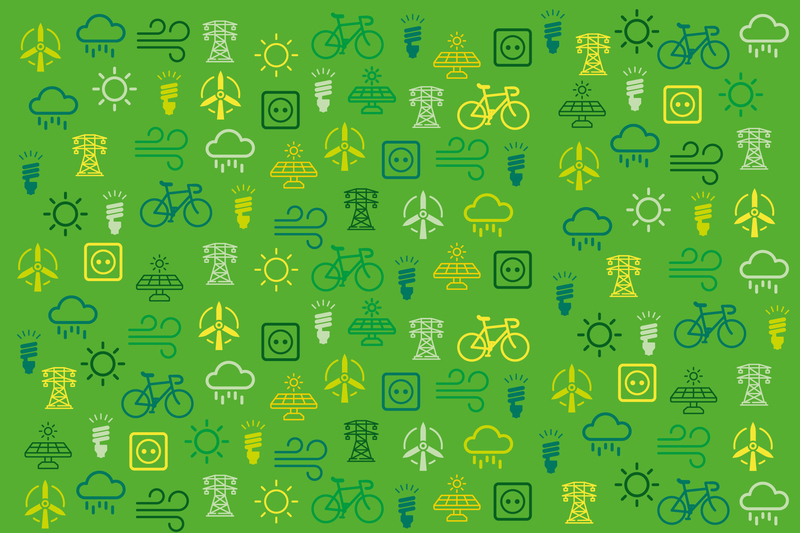
The rise in global average temperatures from the mid-20th century to the present is attributable largely to increased levels of atmospheric greenhouse gas emissions, which are produced to a large extent from burning fossil fuels.
The United Nations Framework Convention of Climate Change aims to keep the increase in global average temperature to below 2°C above pre-industrial levels; and to pursue efforts to limit the increase to 1.5°C. These goals are only achievable by monitoring carbon emissions across the globe.
Calculating UCT’s carbon footprint
A carbon footprint is a measure of greenhouse gas emissions, reported in metric tonnes of carbon dioxide equivalent – tCO₂e.
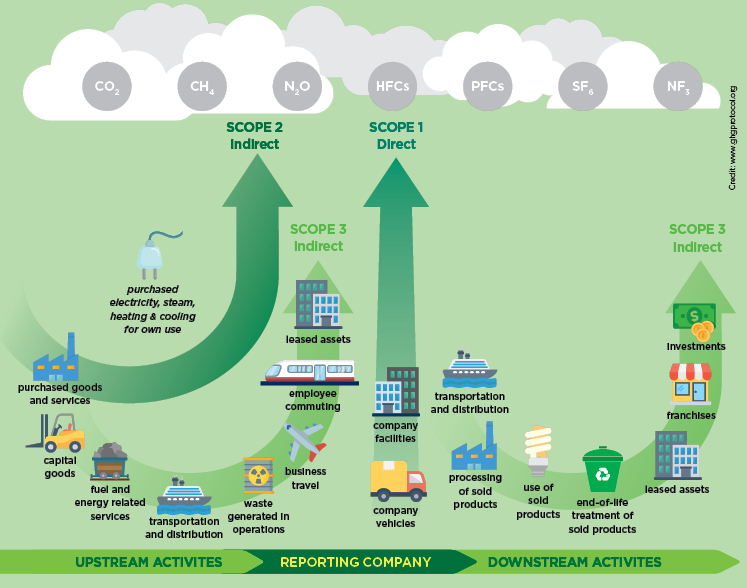
UCT’s 2018 carbon calculations cover the entire university, including 673 385 m² and 35 673 students and staff. It includes Scope 1 (direct emissions) and Scope 2 (indirect emissions associated with purchased electricity), but currently excludes Scope 3 (indirect emissions from air-travel, car hire and procurement) due to a lack of reliable data (Scope 3 is a voluntary requirement of the Greenhouse Gas Protocol because they are emissions from external companies and products.)
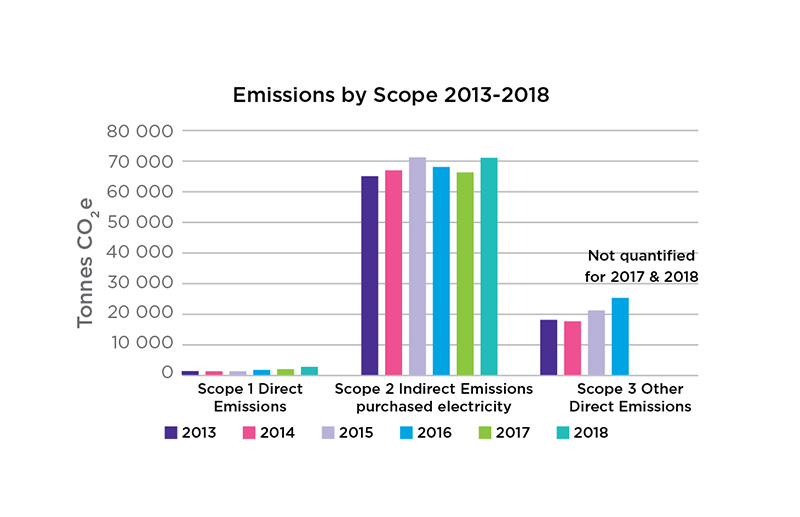
The impact of Eskom’s emission factor
Eskom’s Electricity Grid Emission Factor (calculated annually) is used in carbon calculations to convert operational electricity consumption into a greenhouse gas emission value.
Since electricity use at UCT accounts for 95% of Scope 1 and 2 emissions combined, even small changes to Eskom’s emission factor have a significant effect on our carbon calculations.
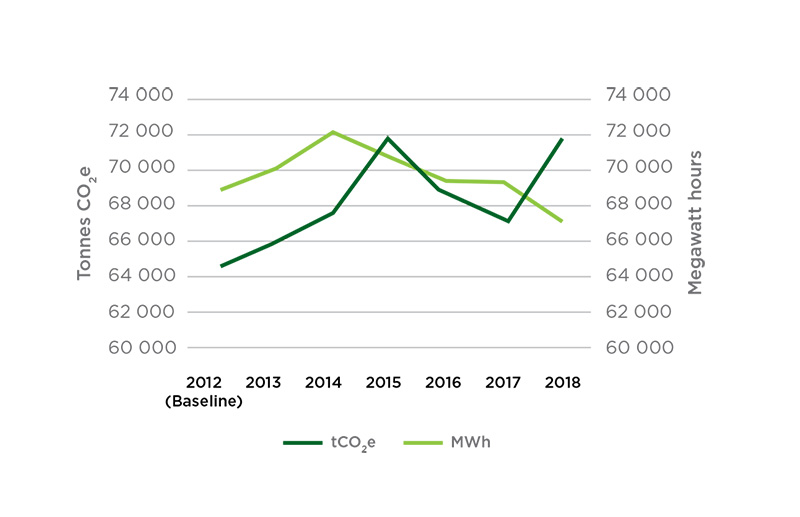
Our electricity consumption – measured in kilowatt hours (kWh) – has been declining (a 1.7% decrease since 2012, with a 2.2% decrease from 2017 to 2018), despite an increase of 16.6% in the total university population.
But Eskom’s emission factor, which increased from 0.97 tCO₂e in 2017 to 1.06 tCO₂e in 2018, pushed calculated totals for Scope 1 and 2 emissions up by 8.1% over the same period.
“UCT aims to become carbon neutral by 2050, in alignment with UN targets, which will require the entire UCT community to work together every year to reduce our collective carbon footprint. Let’s do this together, for the sake of our future.”
– Manfred Braune, Director: Environmental Sustainability
Scope 1 emission details
Scope 1 emissions increased by 42.2% in 2018, largely due to a 149% increase in the use of refrigerants in replenishing air-conditioning and refrigeration systems, which is of concern and must be addressed. Vehicle fleet emissions, however, decreased by 2.5%, and Jammie Shuttle emissions decreased by 14.7%, which is a very positive result.
Scope 2 emission details
Although electricity consumption decreased by 2.2%, Scope 2 indirect emissions from purchased electricity increased by 6.9% in 2018 due to Eskom’s emission factor, which has increased since 2017.
Intensity metrics
Emissions increased by 8.1% to 0.112 tCO₂e per square metre per annum, with the total building area unchanged; and per capita emissions increased by 7.1% to 2.11 tCO₂e. These increases are both largely due to the increase in Eskom’s emission factor – UCT’s actual energy consumption and energy intensity values have decreased even though the UCT population has increased since 2017.
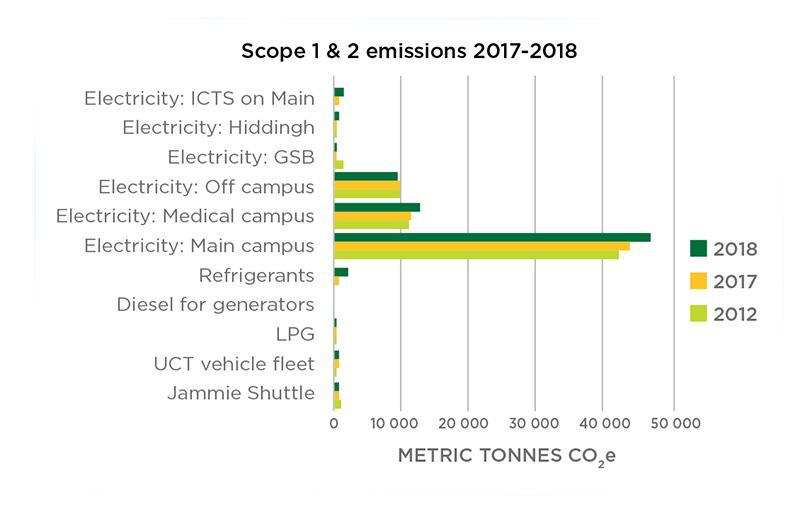
Reducing emissions: a 3-year plan and beyond
Scope 1:
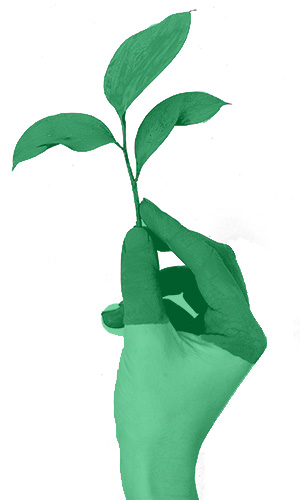
- Develop a management plan and policy to reduce the emissions from the use of refrigerants
- Create a more fuel-efficient vehicle and Jammie Shuttle fleet, aiming for zero-emissions over time
Scope 2:
- Implement an energy efficiency plan across campus Introduce a campus wide photovoltaic installation programme
- Continue to build certified green buildings Implement on-site renewable energy
- Consider renewable power purchase options if the law changes in future to allow this
Scope 3:
- Develop a data quality improvement plan, and a data collection plan
- Collect key metrics and analyse these for easily achieved emissions reductions
- Develop standard operating procedures to reduce emissions from travel, car hire and purchased goods
“Radically reducing our carbon footprint is a key part of our sustainability objectives within UCT’s Vision 2030. UCT is committed to becoming carbon neutral by 2050.”
– Professor Mamokgethi Phakeng, Vice-Chancellor
What can we do?
As a campus community, there is a lot we can do on a daily basis to reduce UCT’s carbon footprint:
- become conscious of where and when energy is being used that is not required
- open a window instead of using air-conditioning
- dress warmly instead of using heating
- switch off lights if there is enough daylight or a room is not being used travel less / use video conferencing drive vehicles more efficiently
- use public transport, Jammie Shuttle, ride share, bike or walk.
UCT’s responses to climate change
Since 1990 UCT has made international and internal policy commitments to environmental sustainability, including:
- Talloires Declaration (1990)
- Green Campus Policy Framework (2009)
- ISCN-GULF Sustainable Campus Charter (2012)
- UCT Environmental Sustainability Strategy (being drafted)
The university has identified strategic initiatives around the most critical issues of climate change. Key among UCT’s transdisciplinary research hubs is the African Climate and Development Institute (ACDI), which aims to collaborate and innovate around Africa’s climate and development challenges.
As the leading institution on the continent, UCT must play a leadership role by setting and achieving ambitious greenhouse gas emissions reduction targets for its ownoperations. UCT has been measuring its carbon footprint since 2007, and these reports are publicly available. The most recent report was done for 2018, in accordance with the international Greenhouse Gas Protocol.

Manfred Braune
Director: Environmental Sustainability
Office of the Vice-Chancellor
3rd Floor Meulenhof
93 Main Road, Mowbray 7700
 This work is licensed under a Creative Commons Attribution-NoDerivatives 4.0 International License.
This work is licensed under a Creative Commons Attribution-NoDerivatives 4.0 International License.
Please view the republishing articles page for more information.










